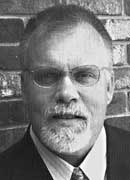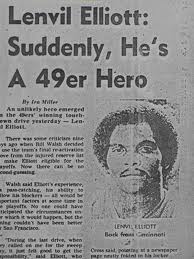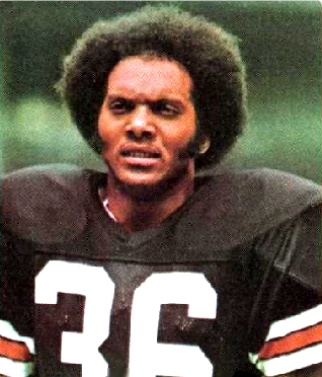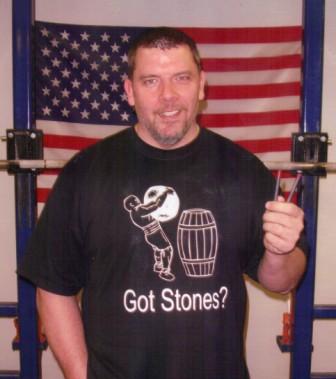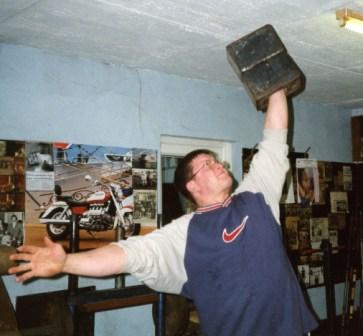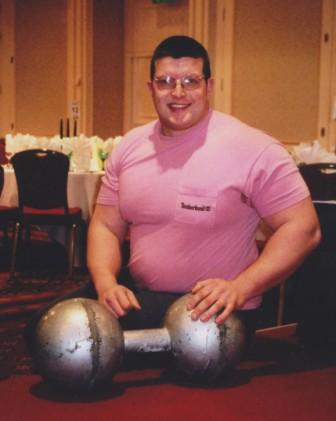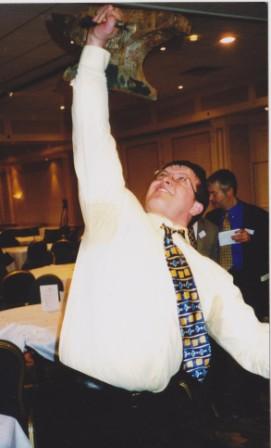JWC: The Pro Football Connection Part III
by Thom Van Vleck
There are a couple more names I’ll associate with the JWC and Pro Football. One is a stretch, but the other is not.
In the 80’s NMSU had a player named Mike Morris. He was strong, I mean really strong. I recall him squatting 770lbs and back then in college that was pretty serious….well….it STILL is. I worked out with him a few times and was in awe of his strength. Later, he would play almost two decades in the NFL as a long snapper and at one time, in the MILO Strength Journal, there was a story on him basically calling him the STRONGEST man in pro football. Since then, I have become friends with Mike Baab. Mike Baab played many years in the NFL and at one point he and Morris were on the same team. I was “trying to impress” Mike with some name dropping and mentioned Morris. Baab said, “Yeah, that guy was really strong, but he had ‘powerlifter’ legs”. I asked what that meant, and Baab smiled and said, “He ran like he had a 45lb plate strapped to each foot!”. Then Baab said, “But you don’t need to be fast to be a long snapper”. I have tried to reach Mike a couple of times with no luck. He does radio work for the Vikings now so I’m guessing I probably don’t carry much clout with him anymore…..if ever!
Then, there was Big John Ware who was a top powerlifter for many years and for the 20 years he was in Kirksville he was a good, close friend and often training partner of mine, who came to my house often. We shared an interest in strength sports and football. John had an undergrad degree in psychology and a Master’s in Counseling, and we attended the same Master’s program but at different times. We had many conversations on the topic of psychology. He was a very intelligent guy. I’ll never forget how I found out about his passing at age 46. Just before I left for the 2005 Masters World Championships (highland games) I had called John. He was in Joplin coaching Missouri Southern and they had a game at Truman in Kirksville coming up, and we were going to get together. He was very encouraging and told me he wanted to hear how things were going with me when I got back. When I got off the plane on my return, my wife had left me a message asking me to call her ASAP….and I got the bad news.
John was an All American Football player at Drake University. He was signed by the San Francisco 49’ers (kind of ironic) and made it to the final cut. John told me later that he realized at that point he could be a world champion powerlifter, or a mediocre pro football player, and he chose greatness. He then added that if the money would have been there like it is now…..powerlifting may not have had one of it’s greatest champs!!! During that time, I got to workout a lot with John. He had one buddy named Dennis McKnight that came back often to train with us. McKnight played at Drake and then logged over 10 years in the NFL.
During the time I trained with him he was a 5 time National Champ in Powerlifting and he was the 1991 World Champ. He probably would have won more World Championships but they were always in the fall and as a football coach….he could not take time off in the fall. His most legendary feat was breaking Bill Kazmaier’s world record in the total. His best lifts were a 1000lb squat (I once spotted him do a triple with 985lbs). I probably spotted him hitting over 600lbs on the bench a couple dozen times, including at triple with 600 one time.
John did share with me that he used a lot of drugs, including steroids. He told me that he was certain it was the cause of his heart problems (he died of a heart attack at age 46). He was also unapologetic. He felt that all the same guys he beat while on steroids he could have beaten off steroids (assuming they were on them, too, and I think all the “greats” of that day were on them). John commented to me he never claimed to be drug free and that when he started them in the 70’s, the culture was very different than it is now and they weren’t aware of all the dangers. He told me if he had started 10 years later, he would probably never would have used them.
John did train in the JWC gym, unlike Morris, as did Glen Jacobs. Jacobs was better known as the pro wrestler KANE! But that, my friends, is another story! I only mention him here because he was a Chicago Bear prospect but could not pass their physical so he went into the crazy world of Pro Wrestling!
That’s the JWC connection to the world or Pro Football! It’s not much, but we are proud of it!
